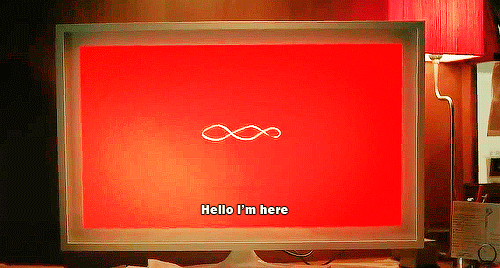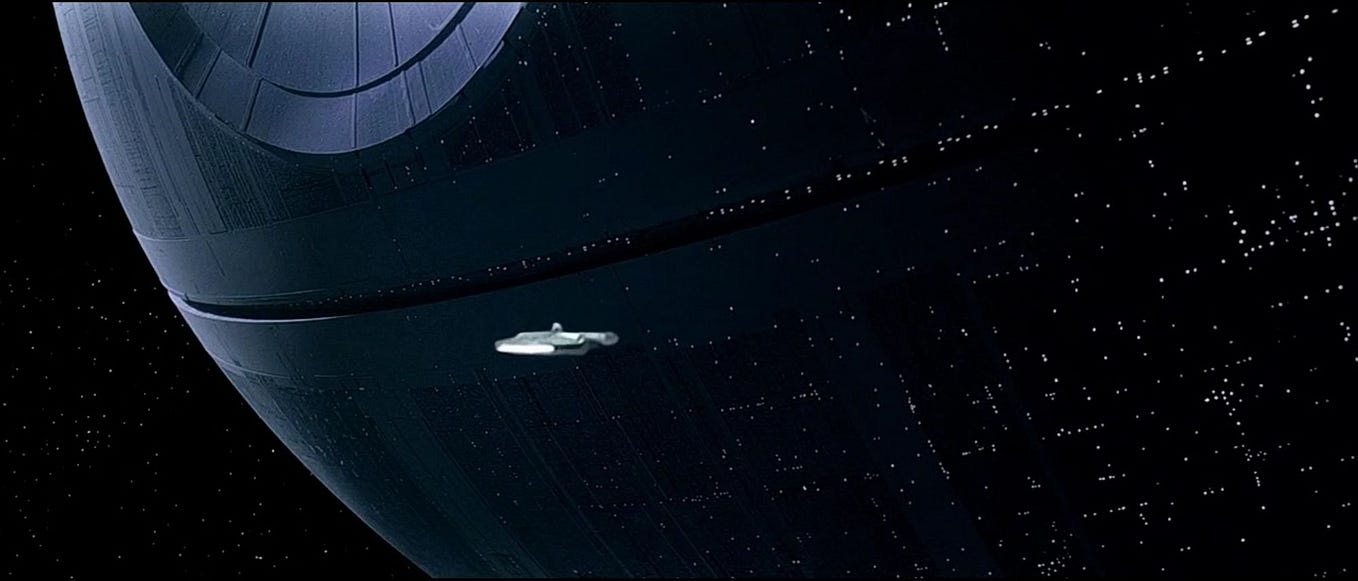Q&A: Michael Arndt
My exchange with the screenwriter of Little Miss Sunshine and Toy Story 3 about his newest video: “Endings: The Good, the Bad and the Insanely Great”.
As any longstanding Go Into The Story reader is likely aware, I am a big fan of screenwriter Michael Arndt. Not only are Little Miss Sunshine and Toy Story 3 some of my favorite movies, but Michael is one of those writers who actually cares about people engaged in learning the craft.
His educational outreach includes creating videos. You may recall one I’ve featured on the blog — “Beginnings: Setting a Story in Motion”. It turns out this 8 minute animated video is just a taste as to what Michael had in mind for he’s recently released a 90 minute video called “Endings: The Good, the Bad and the Insanely Great”.
I reached out to Michael, who I met at last year’s Austin Film Festival, to see if I could ask him some questions about this project. Here is our email Q&A:
Scott: You’ve done live presentations on story beginnings and endings, even a short video or two. What was the impetus to do a 90 minute video: “Endings: The Good, the Bad, and the Insanely Great”?
Michael: This was a 90-minute lecture that I’ve been giving for the last twelve years. I’ve presented it at a ton of film festivals, from Austin to Shanghai. At a certain point, though, rather than jumping on a plane again and flying to a new city, it just made sense to turn it into a video and put it on the web where anyone can see it.
Scott: How did you approach production on the project and how long did it take for you to finish it?
Michael: It was all pretty ad hoc. The first step was getting screenwriter / producer Misa Dayson to help me out. She deserves a lot of credit — the video wouldn’t have happened without her. She brought in our wonderful editor, Yussef Cole — he’s as much an author of the video as I am. And we hired Augenblick Studios in Brooklyn to do the animation. They were great to work with — I couldn’t recommend them more highly.
Making the video took about a year of extremely casual and intermittent work. But it was fun to write something and actually have control over it — usually as a screenwriter you feel like you’re just flinging pages into the abyss. I would highly recommend the video-essay form to anyone who feels frustrated by the delays or compromises of feature films.
Scott: Billy Wilder said, “If you have a problem with the third act, the real problem is in the first act.” Agree?
Michael: I pretty much agree with anything Billy Wilder ever said.
I’ll never forget once, during a Pixar story meeting, Andrew Stanton said, “Your first act is not doing the work you need it to do.” That’s a note that never goes out of style. I find myself giving that exact note over and over — to myself, especially.
In the ENDINGS video, I spend a lot of time showing how in Star Wars, The Graduate, and Little Miss Sunshine, the external, internal, and philosophical stakes are all set up within the first act, and then deepened throughout the second act, so that when you get to the third act, there’s a clarity and weight to the climax.
Scott: In your latest video and, indeed, everything I’ve seen or heard when you talk about Story, you discuss: External Stakes, Internal Stakes, and Philosophical Stakes. First, do you remember when and how you derived that particular take on Story? Second, why is it valuable for an aspiring writer to think about Story and Story Structure with these three dynamics in mind?
Michael: When I was working as a script reader, I read a gazillion scripts that had rote, uninspired endings. It started to really bother me. And even when the ending was unexpected or surprising, there was still often a residual “so what?” factor to the story. Your hero achieved her goal — so what?
It made me realize that it’s really how your hero achieves her goal (and / or defeats the antagonist) that is crucial. And the way around the “so what?” factor is to make the hero’s triumph (or her failure) be as meaningful as possible. That led me to see that stories are often a drama about two competing value systems — one represented by the hero or the hero’s mentor; the other by the antagonist.
So after reading a gazillion scripts with mediocre endings, I finally sat down and mapped out the climax of Star Wars, and that crystalized for me how a great story can have three climaxes — external, internal, and philosophical — that are all logically connected, in as close proximity as possible, and in ascending order of importance. And that was the model I used when I wrote Little Miss Sunshine. I knew the ending of that story before I knew anything else.
On a practical level, every screenwriter faces the classic storytelling problem of how your hero prevails (or fails to prevail) over the forces of antagonism arrayed against them. What is it exactly that allows Luke Skywalker to blow up the Death Star? With Star Wars, it’s actually two things — (a) Luke listens to Obi Wan, pushes aside his computer targeting system, and trusts The Force; and (b) Han Solo comes to Luke’s rescue at the last second. Both of those actions are the culmination of a contest of values embedded throughout the entire movie. That’s why the ending feels so satisfying and meaningful. And I really believe it’s that sense of meaningfulness that speaks to the audience, bonds them to the movie, and that created this pop culture universe that has lasted 40 years.
In a nutshell, if you want your story’s climax to be as satisfying and meaningful as possible, you need to be aware that often (but not always) you actually have three climaxes happening together that involve three distinct sets of stakes — external, internal, and philosophical.
Scott: Speaking of aspiring screenwriters, you’re one of a small group of professional screenwriters who really make an effort to connect with writers who are trying to break into the business. Whether it’s public speaking or things such as your “Beginnings” and “Endings” videos or mingling with writers at the Driskill bar at the Austin Film Festival, you seem to really have a passion for, I guess you might call it, teaching. What motivates you to reach out to aspiring screenwriters and share your insights on the craft?
Michael: I remember when I started out trying to write screenplays, it felt like there was a huge gulf between the screenwriters who were working in Hollywood, and the vast number of aspiring writers — myself included — who were just trying to figure out how to make a story work. And I was desperate for any kind of guidance or advice. I remember stumbling across Terry Rossio’s Wordplayer web site, and being so grateful to him for trying to help up-and-comers like myself.
I sort of promised myself that if I ever had any kind of professional success, I would try to help writers who were just starting out. Of course, once I did become a screenwriter, I was screwed because then I had to actually live up to my own promises.
Scott: You’ve made this amazing “Endings” video available for people to watch for free. What are your hopes for it?
Michael: Being realistic, I just hope it helps anyone who watches it to think more clearly about how to make their stories as meaningful as possible.
Being unrealistic, I would hope the idea of philosophical stakes might become a standard part of the screenwriting vocabulary. When people talk about how stories create meaning, they often use the word “theme”, which I think is a disastrously vague and unhelpful term that doesn’t accurately describe the narrative mechanics that are really going on under the hood of a good story. It’s more accurate to say that meaning often comes from the struggle between two competing value systems that are embedded in a story. The outcome of that contest of values — the philosophical stakes — is where meaning is created.
Scott: You put a lot of disclaimers in the ENDINGS video…
Michael: Obviously, there’s no right or wrong way to tell a story. A story can be anything.
All I’m really doing in ENDINGS is trying to describe exactly how the two-minute climaxes of Star Wars and The Graduate work on a nuts-and-bolts level, and then show how I used those same nuts-and-bolts to write the climax of Little Miss Sunshine.
Scott: Any closing thoughts?
Michael: Just that the best stories are not mere entertainment — they speak to values or ideas of how we should live our lives. They are meaningful.
But I’m afraid the idea that stories should be meaningful has a bad reputation because it’s often badly done. If your hero has to get up at the climax of your movie and give a big didactic speech, you have failed as a storyteller. But if you can make your story super-meaningful without being clumsy or obvious — if you can embed the meaning in the climactic action itself — you will not only turbo-charge the emotion at the end of your story, but you’ll create bond of attachment between the audience and your movie that will stay with them forever.
I had a chance to screen an early version of Michael’s newest video, then re-watched it recently when it was made available online. It’s truly excellent and I recommend it for anyone who is seriously interested in writing good scripts.
You may check it out at Michael’s website: Link.
Twitter: @michaeldbarndt.
Here is a link to a GITS series I’ve done featuring Michael and his thoughts on the craft: Screenwriting Lessons from Michael Arndt: 5 Part Series.







